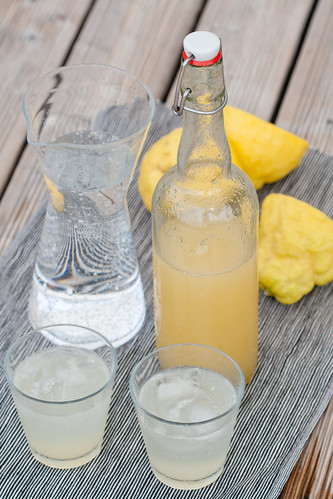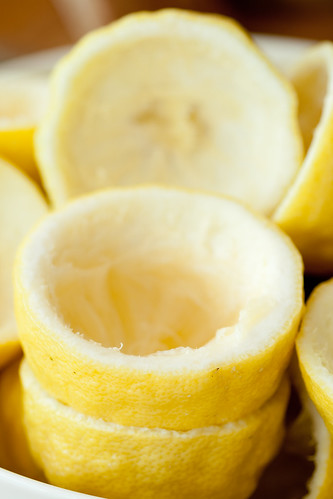
I love the fact that Estonia is becoming more knowledgeable about food - both its own and in general. During the Soviet time you couldn't really buy lemons at all. Then, for well over a decade, we got lemons, but often of questionable quality. I guess with our small population - just over 1.3 million people (= a very small market share) - our fruit importers didn't have much bargaining power at the European fruit and vegetable wholesalers and often ended up with the worst of the available fruit - including dried up lemons. (Still, compared to the "fresh" artichokes or rubbery fennels I've seen, the lemons have been pretty decent, I guess).
Now, during the last few years, we've had a bit of a food(ie) revolution happening. The number of excellent food blogs have sky-rocketed. There are lots of lovely restaurants popping up here and then. Organic food is becoming more available and small, artisanal producers have appeared on the shelves. The country of origin has become more important. If we take lemons, then it's not just a lemon you're buying, but lemons from Spain, Italy or elsewhere - depending on the season and the grocery store. And just recently I've realised that some stores even mark the variety of lemons. My local grocery store has been selling Spanish Primofiori lemons -huge, juicy and beautifully acidic (NB! Do not confuse with the Sicilian primofiore lemons). According to this page, Primofiori (locally known as limon Fino or limon Mesero in Spain) is the most important and popular lemon variety in the Mediterranean basin- over half of the annual Spanish lemon crop is made up of this variety. Primofiori lemons are large (mine averaged at 350 g each!), and they yield a lot of juice for their size.
Here's how I've been making lemonade to quench the thirst - we've had weeks of sunny, warm and dry summer here in Estonia, so this lemonade has been a real hit. It keeps for a week in the fridge, so it's
Note that there's no point giving exact number of lemons here - my Primofiori lemons were weighing about 350 g, yielding about 100 ml (just under 1/2 cup) juice each. I'll just give a proportion of sugar per juice that I've used. This yields a sharp and just slightly sweet lemonade - use more sugar, if you wish.
A really refreshing lemonade
(Tõeliselt mõnus limonaad)

juicy lemons
caster sugar
to serve:
still or sparkling soda water or plain water
ice cubes
Wash the lemons carefully, cut in half and juice them. Measure the juice, then take about 100 g (3.5 oz) of sugar per 250 ml (1 cup) of lemon juice.
Place sugar and lemon juice into a small saucepan and bring slowly to a boil. Let it simmer for about 5 minutes, stirring every now and then.
Cool a little, then bottle and keep in the fridge.
To serve, place some ice cubes into a glass, pour some lemonade extract in over the ice cubes and top with (soda) water, to taste.

- Follow RecipesDream
- Follow @us
